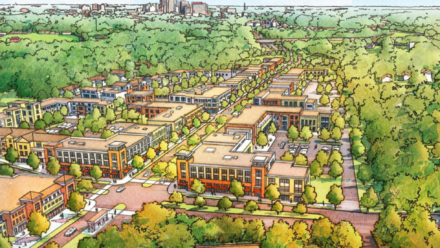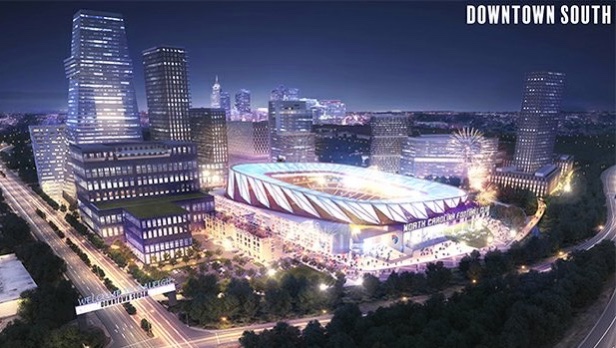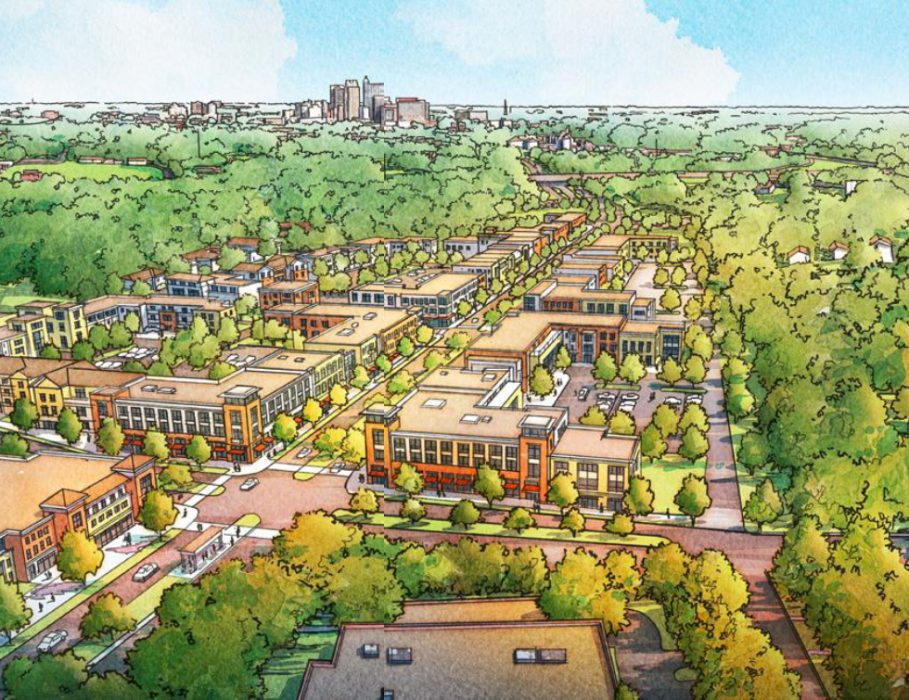Following up on our previous blog about the community forum conducted last week by the Wake County Housing Justice Coalition, two pictures told the story. More than 100 people took part in the forum and offered their views about Kane Realty’s proposed “Downtown South” project, which by the way is a mile-plus from the real Downtown Raleigh.
The participants were asked to choose between a neighborhood scale of development at the site (2 to 12-story buildings, with lots of trees) or development on the scale of a new downtown (20- to 40-story buildings and no trees).
In short, did they prefer this — as shown in an official City of Raleigh illustration?

Or would they like this instead — as pitched by Kane Realty?

By a margin of 87% to 13%, they choose the neighborhood-scale development over the new downtown that Kane is pitching — with a stadium as a draw.
Similarly, when asked if they supported the stadium concept at this site, 86% said NO. Zero people said YES to the stadium. 14% chose NOT SURE.
***
A few takeaways:
-
-
-
- The Downtown South image is Kane’s. Tall buildings like what Kane is proposing inevitably include expensive housing or commercial office space because of the high cost of building them.
- Kane wants this 2nd Downtown to come out of the ground more than a mile from the actual Downtown. In between, small-scale neighborhoods like Fuller Heights and Caraleigh would be surrounded and, eventually, crushed.
- The first image is an illustration used by the City of Raleigh’s planning staff to depict what “Transit-Oriented Development” is supposed to look like along the 4 planned Bus Rapid Transit routes. (The link is to a set of PowerPoint slides.)
- One of the 4 BRT routes is along South Wilmington Street, which is where Kane proposes to put his stadium. Note that “Transit-Oriented Development” is supposed to be dense, but not high-rise. Why? Because some of the housing near the BRT station stops is supposed to be affordable by low-income households, and the rest affordable to working-class folks who may not own a car — or want a car.
- Fascinating that, before Kane showed up with his new “Downtown” plan, the City clearly had in mind lower-scale development along South Wilmington Street, which is depicted in the first image. (The view is from south to north; South Wilmington is the street that curves up to meet the actual Downtown Raleigh in the distance.)
- Dense developments of 3-story, 4-story and perhaps up to 7-story apartment buildings along South Wilmington Street make great sense to attract bus riders.
- Plentiful trees surrounding the apartment buildings fit with the fact that this site adjoins Walnut Creek, a constant flood hazard. Trees absorb water. Lots of water.
- Downtown pavement worsens flooding.
-
-

